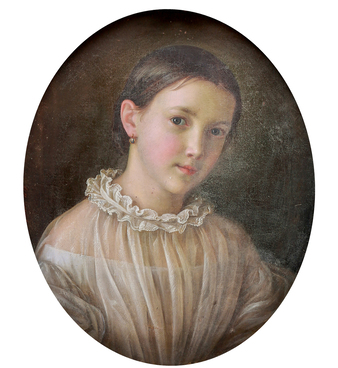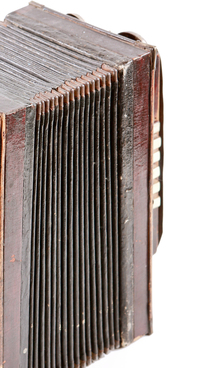In 1837, before taking the throne, the crown prince Alexander Nikolayevich, the future Emperor Alexander II, traveled to the central governorates of Russia. On his trip, the crown prince was accompanied by his tutor, teacher, and mentor — the Russian poet and critic Vasily Zhukovsky. Together they visited Kasimov.
From May to September, the crown prince traveled through 30 governorates, including the Ural and Siberia. The guests’ program was almost the same everywhere: they went sightseeing, visited monasteries and cathedrals, hospitals and prisons, barracks and schools, then they received delegations. Also, balls were arranged for the heir apparent and guests in the provincial cities. Upon the arrival of high-ranking officials, new churches, schools, and almshouses were opened in the towns, local authorities leveled roads, repaired bridges, renovated house facades, and arranged exhibitions of industrial and artistic products.
The crown prince came to Kasimov in August 1837, from Murom, in passing from the Nizhny Novgorod fair. It was expected, that the guests would spend the night in the town. Therefore, rooms were prepared for them in the mansion of the merchant Vasily Barkov.
However, Alexander Nikolayevich did not stay in Kasimov long. The local aristocracy planned a grand basket picnic for the crown prince in an oak grove, on the opposite bank of the Oka River. However, the plan was not realized: there was not enough time.
From Kasimov, the delegation headed for Ryazan straight away. The road there began from the Ryazan downhill in Kasimov and included a waftage over the Oka. A large boat had been prepared in advance for the crown prince Alexander Nikolayevich and his escort to be able to cross the river.
Young people from Kasimov merchant families were put to row. While the heir apparent was waiting for the crossing, he was introduced to a local Kasimov historian and architect Ivan Gagin. Gagin presented him with plans and drawings of the church he was designing, and the future king in response handed him a golden snuffbox. Later, the crown prince sent Gagin a gold medal from St. Petersburg. In memory of the visit of the emperor, the boat on which he had sailed was preserved.
In memory of the reception in Kasimov, Vasily Zhukovsky made an inscription on the boat: “On August 15, 1837, his Imperial Highness the sovereign heir sailed across the river on this boat” and signed: “Zhukovsky”. Previously, the boat was kept in the hall of the Naberezhnaya and Petrovskaya Zastava (Outpost) (Water Gate), and later, its fragment was transferred to the collection of the Kasimov Museum.
From May to September, the crown prince traveled through 30 governorates, including the Ural and Siberia. The guests’ program was almost the same everywhere: they went sightseeing, visited monasteries and cathedrals, hospitals and prisons, barracks and schools, then they received delegations. Also, balls were arranged for the heir apparent and guests in the provincial cities. Upon the arrival of high-ranking officials, new churches, schools, and almshouses were opened in the towns, local authorities leveled roads, repaired bridges, renovated house facades, and arranged exhibitions of industrial and artistic products.
The crown prince came to Kasimov in August 1837, from Murom, in passing from the Nizhny Novgorod fair. It was expected, that the guests would spend the night in the town. Therefore, rooms were prepared for them in the mansion of the merchant Vasily Barkov.
However, Alexander Nikolayevich did not stay in Kasimov long. The local aristocracy planned a grand basket picnic for the crown prince in an oak grove, on the opposite bank of the Oka River. However, the plan was not realized: there was not enough time.
From Kasimov, the delegation headed for Ryazan straight away. The road there began from the Ryazan downhill in Kasimov and included a waftage over the Oka. A large boat had been prepared in advance for the crown prince Alexander Nikolayevich and his escort to be able to cross the river.
Young people from Kasimov merchant families were put to row. While the heir apparent was waiting for the crossing, he was introduced to a local Kasimov historian and architect Ivan Gagin. Gagin presented him with plans and drawings of the church he was designing, and the future king in response handed him a golden snuffbox. Later, the crown prince sent Gagin a gold medal from St. Petersburg. In memory of the visit of the emperor, the boat on which he had sailed was preserved.
In memory of the reception in Kasimov, Vasily Zhukovsky made an inscription on the boat: “On August 15, 1837, his Imperial Highness the sovereign heir sailed across the river on this boat” and signed: “Zhukovsky”. Previously, the boat was kept in the hall of the Naberezhnaya and Petrovskaya Zastava (Outpost) (Water Gate), and later, its fragment was transferred to the collection of the Kasimov Museum.

